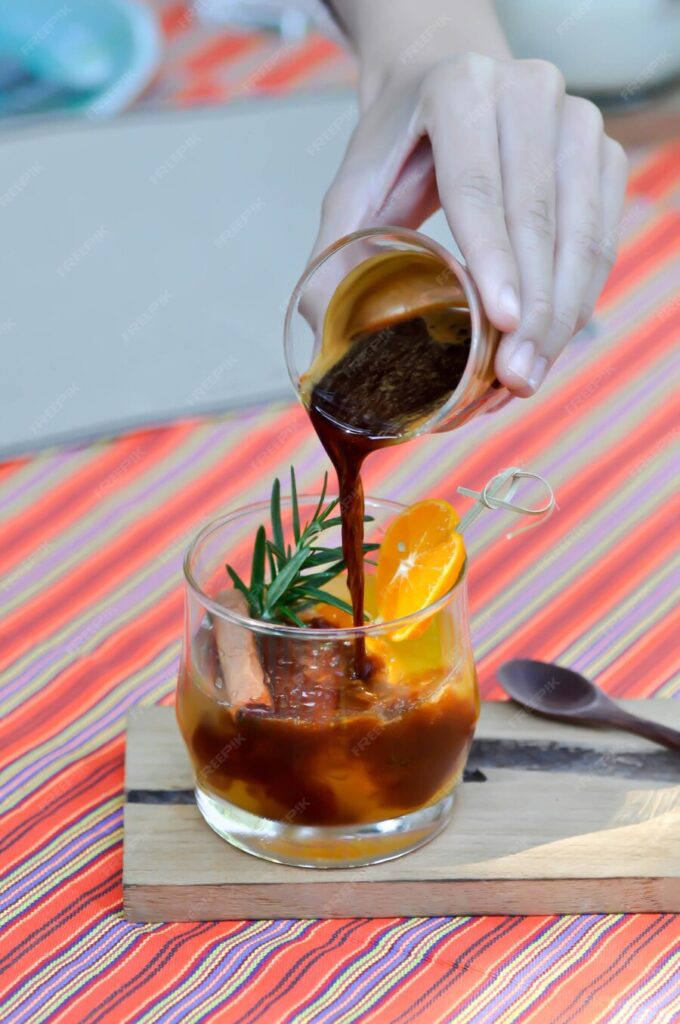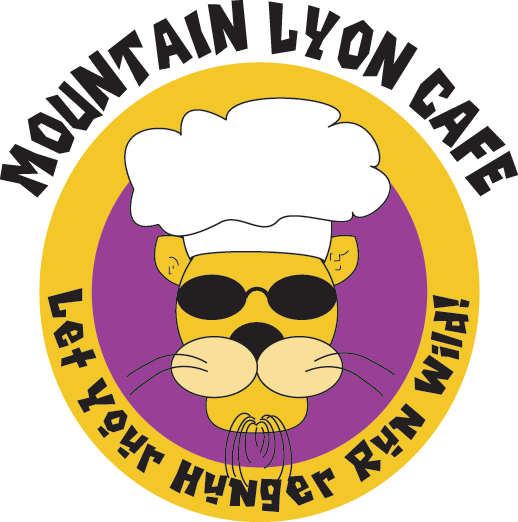Discover what is espresso tonic? How to Make It and Why It’s Trending in 2025, and how to make this refreshing blend of espresso and tonic water at home. From recipe tips to health benefits, explore why this drink is making waves in coffee culture.
What is Espresso Tonic? How to Make It and Why It’s Trending in 2025
Imagine sipping a bubbly, citrus-kissed espresso on a warm summer morning. That’s the essence of Espresso Tonic, a drink that’s redefining modern coffee culture. Combining the bold richness of espresso with the crisp, sparkling character of tonic water, this unconventional pairing is quickly becoming a coffeehouse essential in 2025.
A Drink Born from Innovation and Curiosity
While the Espresso Tonic might feel like a 2025 invention, its roots trace back to Scandinavia in the early 2010s, when baristas began experimenting with unusual coffee pairings to elevate flavor profiles. It soon caught on in Tokyo, Berlin, and New York, evolving from a niche specialty drink into a global café trend. The drink was first popularized by high-end specialty shops like KaffeBar in Oslo and Bear Pond Espresso in Tokyo, known for pushing coffee boundaries.
“Espresso tonic is more than just a beverage — it’s an experience,” says Maria Lunden, coffee mixologist at Blackbird Café in London. “It represents creativity, freshness, and a break from routine.”
In 2025, this drink’s popularity is booming on social platforms like TikTok and Instagram, where videos of swirling espresso cascading into fizzy tonic garner millions of views.
The Basic Ingredients of Espresso Tonic
At its core, Espresso Tonic is made from just a few simple ingredients — but the quality of those ingredients can dramatically affect the final result.
| Ingredient | Purpose | Tips |
|---|---|---|
| Espresso | Delivers bold, rich flavor | Use freshly pulled shots from light or medium roasts |
| Tonic Water | Adds fizz, bitterness, and complexity | Opt for premium tonic with botanical or citrus notes |
| Ice Cubes | Keeps it chilled and refreshing | Use large, clear ice for slower melting |
| Garnishes (opt.) | Enhances aroma and visual appeal | Think lemon peel, rosemary, orange slice |
Pro Tip: Always pour the espresso over the tonic — not the other way around — to preserve carbonation and avoid curdling.
See more: How to Drink Coffee for Brain Health: 7 Smart Tips
How Does Espresso Tonic Taste?
The taste of an espresso tonic can surprise even seasoned coffee lovers.
Bright & Bubbly: Thanks to the carbonation in tonic, the drink delivers a refreshing fizz that lifts the intensity of the coffee.
Bittersweet Harmony: The quinine in tonic water complements espresso’s natural bitterness, resulting in a balanced and complex flavor.
Citrusy & Herbal Notes: Many tonics include subtle hints of lemon, lime, or botanicals, which can pair beautifully with fruity coffee profiles.
“It’s like a coffee spritzer. Once you try it, you’re hooked,” shares Luis Ortega, barista champion at the 2024 World Coffee Expo.
It’s particularly popular during warmer seasons because it offers a low-calorie, dairy-free alternative to heavy iced lattes or frappes.
The History of Espresso Tonic and Its Rise in Popularity
Though relatively new to most mainstream menus, the espresso tonic has been in the works for over a decade. Originating in Swedish third-wave cafés, it gained traction when baristas sought ways to offer non-milky summer coffee options.
2012: First recorded mentions in Nordic coffee forums.
2015: Picked up by specialty cafés in Brooklyn and Melbourne.
2018-2019: Began appearing at larger coffee chains.
2020-2023: Gained popularity in Asia and the US due to social media visibility.
2025: Solidified as a mainstay trend in global coffee culture.
By 2025, the espresso tonic is not just a fad. It’s being served at global barista competitions, infused into coffee cocktails, and even bottled by premium brands like La Colombe and Blue Bottle.
How to Make Espresso Tonic at Home
Craving one now? Making an espresso tonic at home is easier than you think and requires minimal equipment.

Tools and Ingredients You’ll Need
Espresso machine or AeroPress
Chilled tonic water (premium recommended)
Freshly ground light roast coffee
Glass (preferably highball or rocks glass)
Ice cubes
Optional garnishes: lemon peel, mint, or rosemary
Step-by-Step Espresso Tonic Recipe
Fill your glass about ¾ full with large ice cubes.
Pour in 100–150ml of tonic water (chilled).
Brew a single or double shot of espresso.
Slowly pour the espresso over the tonic using a spoon to control flow and avoid disrupting the carbonation.
Garnish with a twist of lemon zest or a sprig of herb.
🍸 Optional: Add a splash of grapefruit juice or a dash of bitters for complexity.
Variations: Citrus, Herbs & Alcoholic Twists
If you’re looking to get creative, here are some popular variations of the drink:
Citrus Boost: Add fresh grapefruit juice or orange peel for a zesty touch.
Herbal Refresh: Garnish with basil, mint, or thyme to elevate aromatics.
Espresso Tonic Cocktail: Add a shot of vodka or gin for a sophisticated brunch drink.
| Version | Additions | Occasion |
|---|---|---|
| Citrus Espresso Tonic | Orange or grapefruit juice | Summer mornings |
| Herbal Espresso Tonic | Mint, rosemary, basil | Garden parties |
| Espresso Gin & Tonic | London dry gin, elderflower tonic | Evening social events |
These variations highlight the drink’s versatility and make it appealing to a wide range of coffee and cocktail lovers.
Why Espresso Tonic is the Trendiest Coffee Drink in 2025
What’s behind the meteoric rise of espresso tonic in 2025? The answer lies in a perfect blend of cultural shifts, aesthetics, and a desire for lighter, more creative beverages.
Social Media’s Role in the Trend
Platforms like TikTok, Instagram Reels, and YouTube Shorts have fueled the drink’s rise by showcasing:
The satisfying layering of espresso over tonic
Creative garnishing techniques
Vibrant glass aesthetics and foam swirl effects
#️⃣ #espressotonic has over 250 million views on TikTok alone, with influencers, baristas, and lifestyle bloggers all crafting their own versions.
Why Baristas and Cafés Are Pushing It
Cafés are always looking for drinks that are:
Easy to prepare
Cost-effective
Visually impressive
Highly Instagrammable
Espresso tonic checks all these boxes. With minimal ingredients and a high perceived value, it boosts both margins and social engagement for small businesses.
“It’s a low-barrier, high-reward menu item,” explains Nina Park, operations director at Brewer’s Row Café in Seoul. “We’ve seen a 40% increase in iced coffee orders since adding espresso tonic to our summer list.”
Gen Z and the Shift Toward Experimental Coffee
Gen Z consumers, known for seeking out unique flavors, health-conscious options, and aesthetic experiences, have fully embraced this trend. Unlike millennials, who often favored sweetened frappes or lattes, Gen Z gravitates toward:
Bold, experimental coffee styles
Eco-friendly, dairy-free drinks
Customizable and photo-ready beverages
This generation is driving a global shift in how coffee is consumed — and espresso tonic fits seamlessly into their lifestyle.
Is Espresso Tonic Healthy? Benefits and Considerations
While taste and trend are great, what about health? The Espresso Tonic comes with a few noteworthy benefits and minor cautions.
Caffeine and Hydration
Combining espresso with tonic means you’re getting a quick caffeine kick plus hydration from the tonic water. Unlike straight espresso, the addition of a carbonated base helps you avoid caffeine dehydration.
Fun Fact: Tonic water originated as a medicinal drink in the 19th century due to its quinine content, which helped prevent malaria. Now it’s repurposed for modern coffee trends!
Sugar and Caloric Content
Regular tonic water contains about 8–10g of sugar per 100ml. If you’re health-conscious:
Opt for diet tonic or botanical sparkling waters
Avoid adding sweet syrups or sugar
| Tonic Type | Calories/100ml | Sugar (g) |
|---|---|---|
| Regular Tonic | 35–40 | 8–10 |
| Diet/Zero Sugar Tonic | 2–5 | 0 |
| Botanical Sparkling Mix | 10–15 | 2–4 |
Expert Tips for the Perfect Espresso Tonic
At Lyoncafe, we’ve spent the past decade crafting, testing, and perfecting espresso recipes that challenge tradition while respecting the essence of great coffee. Our team of expert baristas and coffee curators has refined the art of Espresso Tonic, transforming it from a trend into a timeless addition to the modern coffee ritual. Below, we share our professional insights to help you craft a truly unforgettable version of this refreshing beverage.
Choosing the Right Tonic Water
Not all tonic waters are created equal. In fact, the wrong tonic can make your drink overly bitter, flat, or chemically tasting. That’s why ingredient synergy is key.
Consider these Lyoncafe-approved options:
Fever-Tree Premium Indian Tonic: Bold yet balanced with citrus and quinine. Excellent for fruity espresso.
Q Mixers Tonic Water: Less sweet, high carbonation, allows the espresso to shine.
East Imperial Yuzu Tonic: Perfect for adding a Japanese twist with bright yuzu notes.
“A good tonic enhances, not competes with, the espresso. It should feel like a partnership, not a battle,” says Eliot Nguyen, Lead Beverage Developer at Lyoncafe.
Pro Tip: Avoid overly sweet supermarket tonics. Instead, opt for botanical tonics or craft tonic waters with minimal sugar and natural flavors. The result is a refined and clean finish on the palate.
Best Coffee Beans for Espresso Tonic
One of the most frequently asked questions we get at Lyoncafe is: What beans work best for espresso tonic? Through our trials at our flagship locations in Denver, Hanoi, and Amsterdam, we’ve found that certain flavor profiles perform exceptionally well when mixed with tonic water.
Here’s our curated list of ideal coffee origins and roasts:
| Origin | Flavor Profile | Why It Works |
|---|---|---|
| Ethiopia (Washed) | Floral, citrusy, bright | Matches tonic’s botanicals beautifully |
| Kenya (AA) | Berry, grapefruit, blackcurrant | High acidity pops with carbonation |
| Colombia (Light Roast) | Nutty, cocoa, mild spice | Balances bitterness and brings depth |
“Our Kenya Peaberry espresso over grapefruit tonic was the fastest-selling summer drink in Lyoncafe Hanoi,” shares Ly Tran, Beverage Manager at Lyoncafe Vietnam.
Avoid dark roasts — their smoky bitterness tends to clash with tonic water. Instead, go for light to medium roasts with high acidity and fruit-forward flavor notes. These create a more harmonious and layered drinking experience.
Presentation Tips to Wow Your Guests
In 2025, how a drink looks is just as important as how it tastes. Whether you’re serving customers in a café or impressing friends at home, a well-presented espresso tonic can make a lasting impression.
Here’s how we plate and serve it at Lyoncafe:
Use a crystal-clear highball glass to showcase the layered look.
Drop in slow-melting clear ice cubes for visual clarity and minimal dilution.
Pour espresso slowly over a bar spoon to preserve carbonation.
Finish with a delicate lemon twist or dehydrated orange wheel on the rim.
For upscale service, serve with a small stirring stick and info card on origin of beans and tonic.
“A beautiful coffee tells a story before you even take a sip,” says Angela Madsen, Design Director at Lyoncafe’s European division.
Final Thoughts: Why You Should Try Espresso Tonic in 2025
A Fun, Fresh Way to Enjoy Coffee
Espresso tonic is more than a trend — it’s a new chapter in the evolution of coffee. In a world saturated with sugar-laden lattes and repetitive cold brews, this drink offers a refreshing twist that’s both flavorful and visually stunning. It appeals to the adventurous palate, the health-conscious consumer, and the aesthetically driven generation.
According to a 2025 study by the Global Coffee Innovation Institute, 3 out of 5 Gen Z coffee drinkers say they prefer beverages that are experimental, customizable, and social media-friendly — all traits that espresso tonic naturally embodies.

My name is Kara Chavez, and I love coffee. I love making the best coffees – espresso, latte, macchiato. I always strive for perfection in my barista skills, and I take great pride in bringing delicious cups of coffee to my customers.
I’ve been in the coffee industry for many years, and I know everything there is to know about brewing the perfect cup of coffee. My passion for coffee shines through in every cup I make, and I hope you’ll stop by soon so I can share my love of coffee with you!

